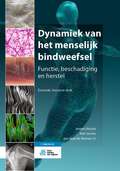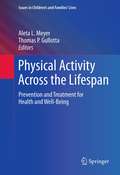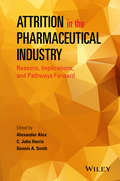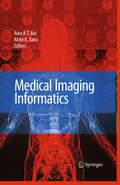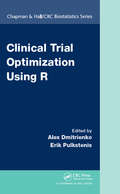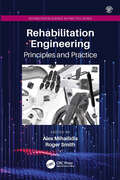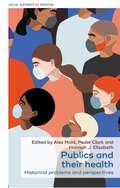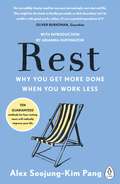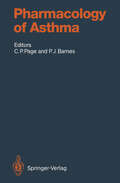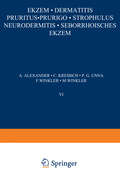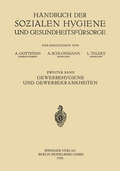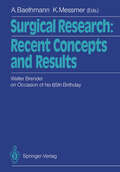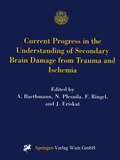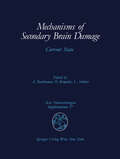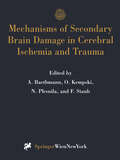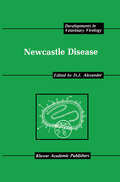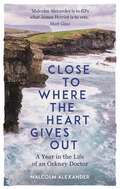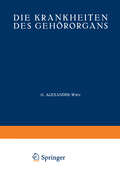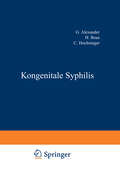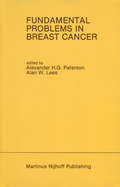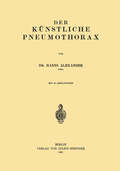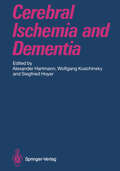- Table View
- List View
Dynamiek van het menselijk bindweefsel: Functie, beschadiging en herstel
by Jeroen Alessie Karl Jacobs Jan Jaap de MorreeDit boek biedt een functionele beschrijving van verschillende typen bindweefsels en vertaalt die naar kennis over lichamelijke belasting, beschadiging en herstel. Het is bedoeld voor studenten fysiotherapie, bewegingstherapie, manuele therapie, ergonomie en kinesitherapie aan hogescholen en universiteiten. Ook voor professionals is het een handig naslagwerk. De eerste versie van Dynamiek van het menselijk bindweefsel verscheen 30 jaar geleden. Deze zevende druk is inhoudelijk ingrijpend gewijzigd, op basis van nieuwe inzichten en recent onderzoek naar bindweefsel. En dan met name op het gebied van de anatomie en de rol van het fasciale systeem als kracht-geleidend en proprioceptief systeem. Hoofdstuk 2 gaat nu in op de embryologische ontwikkeling van bindweefsel en hoofdstuk 9 staat volledig in het teken van de diverse functies van het fasciale systeem. Ook zijn nieuwe foto’s toegevoegd ter illustratie van spier-, pees-, en fasciaweefsel. Dynamiek van het menselijk bindweefsel is een goed aanknopingspunt om de juiste vorm van therapie te kunnen bepalen. Het laatste hoofdstuk helpt daar expliciet bij, daarin staan overwegingen om de therapeutische interventie te ondersteunen. Dynamiek van het menselijk bindweefsel heeft een nieuwe auteursteam. Jeroen Alessie is hogeschooldocent fysiotherapie. Ook is hij is coauteur van paramedische studieboeken. Karl Jacobs is voormalig fysiotherapeut, studeerde Functional and Clinical Anatomy en is als anatoom verbonden aan het Amsterdam UMC. Beide auteurs zijn ervaren sprekers op congressen en betrokken bij diverse bij- en nascholingen.
Physical Activity Across the Lifespan: Prevention and Treatment for Health and Well-Being (Issues in Children's and Families' Lives #12)
by Aleta L. Meyer and Thomas P. GullottaThe statistics are disturbing: steadily rising numbers of sedentary overweight children and obese teens, and a generation looking at a shorter life expectancy than their parents’. But while it may be obvious that physical fitness benefits both the mind and body, a growing research base is supplying evidence of why this is so, and how these benefits may be reproduced in greater numbers.Physical Activity Across the Lifespan makes a clear, scientific case for exercise, sports, and an active lifestyle in preventing illness and establishing lifetime health habits at both the individual and the population levels. The book focuses on key aspects of physical/mental well-being—weight, mood, and self-regulation—and the role of physical activity in public health and school-based interventions targeting these areas. Contributors review definitional and measurement issues salient to understanding what physical activity is, to analyzing benefits of participation, and to implementing effective interventions. Also addressed are limitations of current research, steps needed to continue building the field, and emerging therapeutic possibilities for activity, such as the role of rough and tumble play in preventing ADHD. Included in the coverage:Physical activity, cognition, and school performance.The influence of social and built environments on physical activity in middle-aged and older adults.Preventing and treating obesity through physical activity.Physical activity in preventing drug use and treating chemical dependence.Antidepressant properties of physical activity.Schools as a foundation for physical activity and an active lifestyle.Physical activity as an adjunct or booster to existing interventions.Physical Activity Across the Lifespan is an innovative text for researchers and practitioners in various disciplines including health promotion/disease prevention, child and school psychology, education, health psychology, and public health, as well as program developers and policymakers in these areas.
Math Everywhere: Deterministic and Stochastic Modelling in Biomedicine, Economics and Industry
by G. Aletti Martin Burger Alessandra Micheletti Daniela MoraleThese proceedings report on the conference "Math Everywhere", celebrating the 60th birthday of the mathematician Vincenzo Capasso. The conference promoted ideas Capasso has pursued and shared the open atmosphere he is known for. Topic sections include: Deterministic and Stochastic Systems. Mathematical Problems in Biology, Medicine and Ecology. Mathematical Problems in Industry and Economics. The broad spectrum of contributions to this volume demonstrates the truth of its title: Math is Everywhere, indeed.
Attrition in the Pharmaceutical Industry: Reasons, Implications, and Pathways Forward
by Alexander Alex C. John Harris Dennis A. SmithWith a focus on case studies of R&D programs in a variety of disease areas, the book highlights fundamental productivity issues the pharmaceutical industry has been facing and explores potential ways of improving research effectiveness and efficiency. • Takes a comprehensive and holistic approach to the problems and potential solutions to drug compound attrition• Tackles a problem that adds billions of dollars to drug development programs and health care costs• Guides discovery and development scientists through R&D stages, teaching requirements and reasons why drugs can fail• Discusses potential ways forward utilizing new approaches and opportunities to reduce attrition
Attrition in the Pharmaceutical Industry: Reasons, Implications, and Pathways Forward
by Alexander Alex C. John Harris Dennis A. SmithWith a focus on case studies of R&D programs in a variety of disease areas, the book highlights fundamental productivity issues the pharmaceutical industry has been facing and explores potential ways of improving research effectiveness and efficiency. • Takes a comprehensive and holistic approach to the problems and potential solutions to drug compound attrition• Tackles a problem that adds billions of dollars to drug development programs and health care costs• Guides discovery and development scientists through R&D stages, teaching requirements and reasons why drugs can fail• Discusses potential ways forward utilizing new approaches and opportunities to reduce attrition
Medical Imaging Informatics
by Alex A.T. Bui Ricky K. TairaMedical Imaging Informatics provides an overview of this growing discipline, which stems from an intersection of biomedical informatics, medical imaging, computer science and medicine. Supporting two complementary views, this volume explores the fundamental technologies and algorithms that comprise this field, as well as the application of medical imaging informatics to subsequently improve healthcare research. Clearly written in a four part structure, this introduction follows natural healthcare processes, illustrating the roles of data collection and standardization, context extraction and modeling, and medical decision making tools and applications. Medical Imaging Informatics identifies core concepts within the field, explores research challenges that drive development, and includes current state-of-the-art methods and strategies.
Clinical Trial Optimization Using R (Chapman & Hall/CRC Biostatistics Series)
by Alex Dmitrienko; Erik PulkstenisClinical Trial Optimization Using R explores a unified and broadly applicable framework for optimizing decision making and strategy selection in clinical development, through a series of examples and case studies. It provides the clinical researcher with a powerful evaluation paradigm, as well as supportive R tools, to evaluate and select among simultaneous competing designs or analysis options. It is applicable broadly to statisticians and other quantitative clinical trialists, who have an interest in optimizing clinical trials, clinical trial programs, or associated analytics and decision making. This book presents in depth the Clinical Scenario Evaluation (CSE) framework, and discusses optimization strategies, including the quantitative assessment of tradeoffs. A variety of common development challenges are evaluated as case studies, and used to show how this framework both simplifies and optimizes strategy selection. Specific settings include optimizing adaptive designs, multiplicity and subgroup analysis strategies, and overall development decision-making criteria around Go/No-Go. After this book, the reader will be equipped to extend the CSE framework to their particular development challenges as well.
Rehabilitation Engineering: Principles and Practice (Rehabilitation Science in Practice Series)
by Alex Mihailidis and Roger SmithThis book will provide an overview of the rehabilitation engineering field, including key concepts that are required to provide a solid foundation about the discipline. It will present these concepts through a mix of basic and applied knowledge from rehabilitation engineering research and practice. It's written as an introductory text in order to provide access to the field by those without previous experience or background in the field.These concepts will include those related to engineering and health that are necessary to understand the application of rehabilitation engineering to support human function.
Publics and their health: Historical problems and perspectives (Social Histories of Medicine #45)
by Alex Mold, Peder Clark and Hannah J. ElizabethThe COVID-19 pandemic has resulted in a renewed interest in the relationship between public health authorities and the public. Particular attention has been paid to ‘problem publics’ who do not follow health advice. This is not a new issue. As the chapters in this collection demonstrate, the designation of certain groups or populations as problem publics has long been a part of health policy and practice. By exploring the creation and management of these problem publics in a range of time periods and geographical locations, the collection sheds light on what is both specific and particular. For health authorities, publics themselves were often thought to pose problems, because of their behaviour, identity or location. But publics could and did resist this framing. There were, and continue to be, many problems with seeing publics as problems.
Rest: Why You Get More Done When You Work Less
by Alex Soojung-Kim PangIn our 24-7 global economy, rest feels like a luxury at best and a weakness at worst. We see work and rest as competitors - but what if they're actually partners in a productive, balanced life? Blending rigorous scientific research with examples of writers, painters and thinkers - from Darwin to Stephen King - Silicon Valley futurist and business consultant Alex Soojung-Kim Pang exposes how we've underestimated the power of rest for our success. Though it's as natural as breathing, it's also a skill we can all learn to boost our creativity and productivity.Full of tips for upping our downtime, from sleep to hobbies to vacation, Rest is a new roadmap for finding renewed energy and inspiration, and getting more done.
Pharmacology of Asthma (Handbook of Experimental Pharmacology #98)
by A. G. Alexander P. J. Barnes K. F. Chung R. J. Flower L. G. Garland R. G. Goldie S. T. Holgate A. B. Kay A. Laitinen L. A. Laitinen K. M. Lulich C. P. Page J. W. Paterson R. Pauwels C.G.A. Persson I. W. Rodger M. Schmitz-Schumann R. C. Small S. F. Smith A. Szczeklik C. Virchow J. W. WilsonThis volume forms part of a prestigious series and covers the latest advances in our understanding of the pathophysiology and treatment of asthma. Our understanding of asthma has changed dramatically in recent years, and much of this new information is brought together in this volume written by inter nationally recognised authorities. The aim of the book is to review in depth the changing concepts of inflammatory processes in asthma and to discuss the implications for research of this common chronic disease. Many of the advances in and future therapy our understanding of asthma have originated from a pharmacological approach, and this volume highlights the promising new options for pharma cological intervention. It is hoped this book will be invaluable for research scientists and clinic ians involved in asthma research and will be a major reference resource for chest physicians and those involved in the development of novel pharmaceu tical entities. Each chapter is extensively referenced, generously illustrated with clear diagrams and photographs, and represents a state-of-the-art review of this growing area. c.P. PAGE P.l. BARNES Contents CHAPTER 1 The Pathology of Asthma: An Overview L.A. LAmNEN and A. LAmNEN. With 10 Figures ...................... 1 A. Introduction . . . . . . . . . . . . . . . . . . . . . . . . . . . . . . . .. . . 1 . . . . . . . . . . . . . . . B. Methods to Investigate the Pathology of Human Asthma ............ 1 C. Bronchial Epithelium and Inflammatory Cells in Asthmatic Patients Between Attacks ........................... 2 I. Mast Cells . . . . . . . . . . . . . . . . . . . . . . . . . . . . . . .. . . 4 . . . . . . . . . . . . . . II. Eosinophils ............................................... 7 III. Neutrophils.............................................. 10 D. Bronchial Epithelial Inflammation During an Asthma Attack. . . . . .. . 10 E. Epithelial Regeneration .... . . . . . . . . . . . . . . . . . . . . . . .. . . 12 . . . . . . . . .
Ekƶem · Dermatitis Pruritus · Prurigo · Strophulus Neurodermitis·Seborrhoisches Ekƶem (Handbuch der Haut- und Geschlechtskrankheiten #A / 6 / 1)
by A. Alexander C. Kreibich P. G. Unna F. Winkler M. WinklerDieser Buchtitel ist Teil des Digitalisierungsprojekts Springer Book Archives mit Publikationen, die seit den Anfängen des Verlags von 1842 erschienen sind. Der Verlag stellt mit diesem Archiv Quellen für die historische wie auch die disziplingeschichtliche Forschung zur Verfügung, die jeweils im historischen Kontext betrachtet werden müssen. Dieser Titel erschien in der Zeit vor 1945 und wird daher in seiner zeittypischen politisch-ideologischen Ausrichtung vom Verlag nicht beworben.
Gewerbehygiene und Gewerbekrankheiten
by Alexander Alexander Adolf Gottstein Arthur Schloßmann Ludwig TelekyDieser Buchtitel ist Teil des Digitalisierungsprojekts Springer Book Archives mit Publikationen, die seit den Anfängen des Verlags von 1842 erschienen sind. Der Verlag stellt mit diesem Archiv Quellen für die historische wie auch die disziplingeschichtliche Forschung zur Verfügung, die jeweils im historischen Kontext betrachtet werden müssen. Dieser Titel erschien in der Zeit vor 1945 und wird daher in seiner zeittypischen politisch-ideologischen Ausrichtung vom Verlag nicht beworben.
Surgical Research: Festschrift Dedicated to Walter Brendel on Occasion of his 65th Birthday
by Alexander Baethmann and Konrad MessmerSince surgery became a method of treating patients, progress in the field has been intimately associated with experimentation and serendipitous research. As in other clinical specialties advances in surgery can be considered to result from experimental attempts to increase basic knowledge and to improve technical skills. However, virtually in no other area do concepts and approaches of experimental research enter clinical routine as fast as in surgery. There are numerous examples of this. Thus, allocation of manpower and resources for surgical research can be considered particu- 1arly profitable as convincingly shown, for instance, in renal transplantation by comparison of the long-term burden of hemodialysis vs. kidney grafting, apart from the relief of suffering and misery. Surgery is a continuously spreading field, and so is surgical research. This volume is a case in point. Its spectrum reaches from basic molecular biological aspects of immune mechanisms to the current state of the art of pulmonary surgery of cancer metastases, and from the molecular processes of cell swelling in ischemic brain edema and blood-brain barrier damage to novel forms of resuscitation or of treatment of insulin-dependent diabetes mellitus. Surgical research faithfully reflects a constant reorientation of medical disciplines. Treatment of renal or gallbladder concrements was a major domain of surgery, where the introduction of extracorporeal shock wave treatment now supplies noninvasive, virtually conservative alternatives.
Current Progress in the Understanding of Secondary Brain Damage from Trauma and Ischemia: Proceedings of the 6th International Symposium: Mechanisms of Secondary Brain Damage-Novel Developments, Mauls/Sterzing, Italy, February 1998 (Acta Neurochirurgica Supplement #73)
by Alexander Baethmann, Nikolaus Plesnila, Florian Ringel and Jörg EriskatMechanisms of Secondary Brain Damage: Current State (Acta Neurochirurgica Supplement #57)
by Alexander Baethmann, Oliver Kempski and Ludwig SchürerGreat progress has been made in the understanding and prevention of secondary brain damage from acute cerebral disorders, such as trauma and ischemia. Advances may be concerned in particular with better organization and logistics of preclinical emergency care, including rapid arrival of well-trained medical staff on the scene of an accident and of transportation to a competent hospital. Nevertheless, it is a safe assumption that development of secondary brain damage from both intra- and extracranial causes still represents a major factor for the final outcome in severe head injury. Thus, exchanges of experiences and information between various disciplines involved with this important clinical problem - trauma still assumes the number one position as a cause of morbidity and mortality up to an age of 45 years - may provide a basis for in-depth analysis of remaining problems as well as of methods of their solution. This exactly is the purpose of the present publication on concepts and findings pertinent for the general subject of secondary brain damage from various experimental as well as clinical viewpoints. An internationally high-ranking group of experts has been contributing to this collection of reviews on cerebral trauma and ischemia and its adverse sequelae, including cerebral exploration by most modern technologies, such as NMR spectroscopy or PET scanning, among others.
Mechanisms of Secondary Brain Damage in Cerebral Ischemia and Trauma (Acta Neurochirurgica Supplement #66)
by Alexander Baethmann, Oliver S. Kempski, Nikolaus Plesnila and Frank StaubThe publication of the Vth International Symposium 1995 on "Mechanisms of Secondary Brain Damage" in Mauls/ltaly is a collection of focused reviews reaching from novel molecular- and cell biological findings to aspects of clinical management in head injury and cerebral ischemia. A specific purpose of these series of meetings introduced in 1984 is for an exchange on problems of mutual interest by international high ranking experts from the basic sciences and related clinical disciplines, such as intensive care medicine, neurology, or neurosurgery. The present volume covers three major areas: (a) Molecular and cell biological mechanisms including inflammation (b) Novel findings on mechanisms and treatment in cerebral ischemia (c) Secondary processes in head injury, regeneration and treatment Molecular-and cell biology is currently attracting attention towards activation of genomic processes associated with the demise of cells referred to as "programmed cell death" and "apoptosis" which, actually, might be distinguished from each other. Thus, the phenomenon of delayed neuronal death in selectively vulnerable brain areas following brief interruption of blood flow is scrutinized as to the contribution of the activation of suicide genes. The physiological role of such a response, among others, is removal of surplus neurons during ontogenesis of the brain. Yet, evidence is accumulating that similar mechanisms playa role in cerebral ischemia, probably also trauma, where nerve-and other cells demonstrate features of apoptosis. Observations on protection of neurons by administration of protein synthesis inhibitors in cerebral ischemia provide more direct support.
Newcastle Disease (Developments in Veterinary Virology #8)
by D. J. AlexanderMost of the chapters of this book were written during 1987 which was the Diamond Jubilee year of the publication of the first reports of Newcastle disease in 1927. During the intervening years the nature of the Poultry Industry throughout the World has changed, or is in the process of changing, dramatically from one based on small village or farm flocks, frequently kept as a sideline, to an industry based on large flocks, sometimes consisting of hundreds of thousands of birds, run by multinational companies. To all these flocks, both large and small, Newcastle disease poses a considerable threat to their well-being and profitability and it is not unreasonable to state that hardly a single commercial flock of poultry is raised in the world without Newcastle disease having some effect due to actual disease, prophylactic vaccination or restrictions placed on rearing, movement, processing, sale or export of birds and products. In addition, recent years have produced developments in virology and associated biological technology which would have been unbelievable when Newcastle disease virus was first isolated. The economic importance of Newcastle disease virus and its use as a laboratory model has meant that major advances have been quickly applied to the field situation whenever possible and, as a result, a much fuller understanding, not only of the biochemistry and basic virology of the virus but also the ecology, epizootiology, antigenicity, immunology and other important aspects in the control of the disease has been achieved.
Close to Where the Heart Gives Out: A Year in the Life of an Orkney Doctor
by Dr Malcolm Alexander‘Wind-whipped and salt-stung, Malcolm’s account of island life is both grounding and immensely heart-warming. He is to GPs what James Herriot is to vets.’ MATT GAW'A fascinating, funny and utterly heart-warming family adventure. Beautifully written and completely unforgettable.' RUTH HOGAN ‘A mesmerising read about a personal journey, this book is all versions of love (with the island of Eday in starring role).’ HANNAH PERSAUD 'I love the descriptions of the landscape and everyday life.' DOLLY ALDERTON___________Set in the wild and remote landscape of Eday, part of the Orkney archipelago, Close to Where the Heart Gives Out is the unflinchingly honest and moving tale of rural life, from the only doctor on the island ...___________In his forties, Malcolm gave up his job in suburban Glasgow when a persistent seed that had been growing inside him started to bloom, disrupting the foundations of his life. When he saw the job advert, ‘urgent: island doctor needed’, he applied immediately. What he didn’t anticipate was how much Orkney would affect his family, for better or worse. In stories that range from the humorous to the deeply moving, Malcolm describes what it’s like adjusting to life without modern conveniences and to the extreme – and constantly changing – weather; and what it means to be providing the best medical care to the local population with limited resources. Which often includes the wildlife as well ...Malcolm’s journey evokes the awe that the Orkney landscape can inspire, as well as the challenges of island life and the demons that the dark, cold winter months can give birth to. Gripping and beautifully written, Close to Where the Heart Gives Out reminds us of the importance of listening to our heart, as well as to the rhythms of the landscape.
Die Krankheiten des Gehörorgans: Erster Teil: Anatomie · Entwicklungsgeschichte Physiologie · Pathologie · Untersuchungsmethoden · Therapie (Handbuch der Hals-, Nasen-, Ohrenheilkunde mit Einschluß der Grenzgebiete #6-8 / 6)
by G. Alexander G. Anton K. Beck O. Beck R. Beneke H. Birkhol? W. Brock G. Brühl A. Eckert-Möbius O. Fleischmann M. Giesswein K. Grünberg J. Hegener A. Knick O. Körner A. Linck H. Marx G. C. Müller F. R. Nager H. Neumann E. Ruttin M. Schacherl K. L. Schaefer E. Schlittler V. Sonnenkalb P. Stenger H. Streit E. Urbantschitsch F. Fremel L. LedererDieser Buchtitel ist Teil des Digitalisierungsprojekts Springer Book Archives mit Publikationen, die seit den Anfängen des Verlags von 1842 erschienen sind. Der Verlag stellt mit diesem Archiv Quellen für die historische wie auch die disziplingeschichtliche Forschung zur Verfügung, die jeweils im historischen Kontext betrachtet werden müssen. Dieser Titel erschien in der Zeit vor 1945 und wird daher in seiner zeittypischen politisch-ideologischen Ausrichtung vom Verlag nicht beworben.
Die Krankheiten des Gehörorgans: Zweiter Teil Krankheiten des Äusseren, Mittleren und Inneren Ohres · Otosklerose · Tuberkulose · Syphilis · Tumoren des Ohres (Handbuch der Hals-, Nasen-, Ohrenheilkunde mit Einschluß der Grenzgebiete #6-8 / 7)
by G. Alexander O. Beck C. E. Benjamins A. Blohmke W. Brock G. Brühl A. J. Cemach R. Eschweiler M. Goerke J. Hegener V. Hinsberg L. Lederer M. Mann Max Meyer Th. Nühsmann B. Oertel A. Scheibe R. Schilling E. Schlander P. StengerDieser Buchtitel ist Teil des Digitalisierungsprojekts Springer Book Archives mit Publikationen, die seit den Anfängen des Verlags von 1842 erschienen sind. Der Verlag stellt mit diesem Archiv Quellen für die historische wie auch die disziplingeschichtliche Forschung zur Verfügung, die jeweils im historischen Kontext betrachtet werden müssen. Dieser Titel erschien in der Zeit vor 1945 und wird daher in seiner zeittypischen politisch-ideologischen Ausrichtung vom Verlag nicht beworben.
Kongenitale Syphilis (Handbuch der Haut- und Geschlechtskrankheiten #B / 19)
by G. Alexander H. Boas C. Hochsinger J. Igersheimer P. Kran? R. Ledermann F. Lesser Erich Müller H. Rietschel L. v. ?umbuschDieser Buchtitel ist Teil des Digitalisierungsprojekts Springer Book Archives mit Publikationen, die seit den Anfängen des Verlags von 1842 erschienen sind. Der Verlag stellt mit diesem Archiv Quellen für die historische wie auch die disziplingeschichtliche Forschung zur Verfügung, die jeweils im historischen Kontext betrachtet werden müssen. Dieser Titel erschien in der Zeit vor 1945 und wird daher in seiner zeittypischen politisch-ideologischen Ausrichtung vom Verlag nicht beworben.
Fundamental Problems in Breast Cancer: Proceedings of the Second International Symposium on Fundamental Problems in Breast Cancer Held at Banff, Alberta, Canada April 26–29, 1986 (Developments in Oncology #51)
by Alexander H. G. Paterson and Alan W. LeesThe chapters in this book are those presented at the Second International Symposium on Fundamental Problems in Breast Cancer held at Banff, Alberta, April 26-29, 1986. This is, therefore, the second volume in the series of symposia held in the Canadian Rockies. The aim of these symposia is to provide a supportive atmosphere for the development of new concepts as well as for the presentation of high quality scientific data. This is reflected in the chapters presented here. Many of the chapters put forward new hypotheses which will be tested in the clinic or laboratory in the next few years. In choosing the subjects for discourse, we preferred to tackle areas where controversy existed, and in this book we have grouped the chapters around discussion themes. The relative merits of mammography and physical examination in the detection of small lesions within the breast and the natural history of these lesions were important topics at the symposium, and the results of early detection studies will have a major effect on health care costs. We have devoted a large section of this book to this subject. The mechanism of growth and response of endocrine sensitive tumors and current concepts of the statistics and cost-benefit assessment of adjuvant chemotherapy trials comprise two other sections of the book where original and stimulating ideas were presented.
Der Künstliche Pneumothorax
by Hanns AlexanderDieser Buchtitel ist Teil des Digitalisierungsprojekts Springer Book Archives mit Publikationen, die seit den Anfängen des Verlags von 1842 erschienen sind. Der Verlag stellt mit diesem Archiv Quellen für die historische wie auch die disziplingeschichtliche Forschung zur Verfügung, die jeweils im historischen Kontext betrachtet werden müssen. Dieser Titel erschien in der Zeit vor 1945 und wird daher in seiner zeittypischen politisch-ideologischen Ausrichtung vom Verlag nicht beworben.
Cerebral Ischemia and Dementia
by Alexander Hartmann, Wolfgang Kuschinsky and Siegfried HoyerIn contrast to dementia of the Alzheimer type, the subject of dementia subsequent to cerebral ischemia has been discussed rather rarely. Now this book provides a summary of the brain morphology, neurochemistry and clinical aspects of dementia subsequent to cerebral ischemia. The contributions discuss the similarities and differences between the two predominant dementia types. The broad range of aspects cover 1) the morphology and morphobiology of brain tissue during aging and under the two pathological condi- tions, 2) the neuropathochemistry of post mortem brain tissue of patients as well as brain tissue from experimental animals, 3) CSF changes during aging and in dementia states and 4) clinical research, mainly using brain imaging tech- niques to differentiate between dementia types and to find a basis for rational therapeutic approaches.
